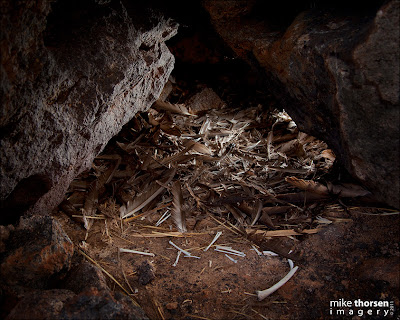A busy time recently editing images and photographing NZ plants (more on this later), but have still managed to get a (few) photos.
First the Ketetahi hotsprings on the flanks of Tongariro volcano in Tongariro National Park. This area is waahi tapu (sacred site) to local maori whose legend is that the demigod trickster Maui warmed himself here after stealing the secret of fire from the gods in Hawaiiki.
About the photo: As this is a sacred site, I could not get close. That, and the uninspiring partially overcast sky made it challenging to get a good photo. I used a moderately wide angle lens (Canon 24-105 f4 L @ 24mm) at f 16 to get the depth of focus from the nearby tussock grasses to the stream in the valley and up to the ridgeline, and underexposed by nearly 1 stop. I waited for a patch of sunlight to highlight the geothermal steam. Not a great shot, but not too bad given the conditions.
Next was a detail shot.
About the photo: this is taken from the same location as that above and using the same lens zoomed to 105mm. F 6.3 was used to add depth to the photo and to give the 1/500th sec shutter speed to freeze the billowing of the steam. What would be great would be to have something in there like a person in a red raincoat to give a sense of scale (they would be about as tall as my logo). You work with what you get . . .
After recovering from feeling a bit like spawning salmon after having to struggle against people walking the nearby Tongariro Alpine Crossing track in their hundreds (every day) we headed to Waihora Lagoon in Pureora State Forest in a large electrical storm - you gotta go that extra mile if you want your photos to stand out! Unfortunately the clouds weren't cooperating to give a great towering dark cloudbank backdrop, but I'm reasonably happy with the results . . .
About the photo: this is a panorama created from 9 overlapping images. A polarising filter was used to reduce the sheen on the water. The rain gave a gorgeously saturated green to the trees, but meant Fran had to hold a reflector over the camera to keep the camera dry (I left the umbrella in the car - doh!!).
And another perspective:
About the photo: this is a single shot taken while standing
in the lake (maybe not a great idea as the lightning and thunder crackled and roared all around). A low viewpoint was used to bring attention to the water and a slow shutter speed (2 seconds) to add a haze over the water surface from the torrential rain. With the cloud backdrop I envisaged, this could have been an awesome shot. Next time.
Next post - babies or video. Yet to decide
















